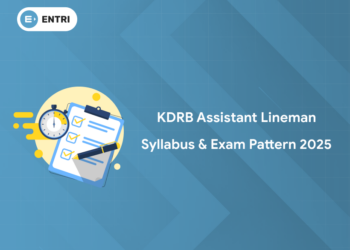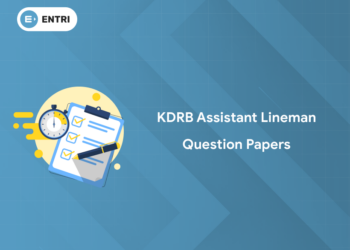Table of Contents
Cost accounting refers to the techniques used to determine and analyze the costs associated with producing goods or services. These methods provide valuable insights into the cost structure of a company. It allows management to make informed decisions about pricing, budgeting, and overall cost control. In this article we will discuss Cost Accounting Methods: Job Order Costing vs. Process Costing.
Unlock Your Accounting Potential – Enroll in Our Comprehensive Course Today!
Cost Accounting Methods:
Here are brief introductions to two commonly used cost accounting methods:
Job Order Costing:
Job order costing is employed when goods or services are produced based on specific customer orders or projects. It involves tracking the direct materials, direct labor, and overhead costs associated with each individual job or order. This method is often used in industries such as construction, custom manufacturing, and professional services. Where each job or project has unique requirements and costs.
Process Costing:
Process costing is used when products are manufactured through a continuous production process, resulting in large quantities of identical units. This method involves allocating costs to each production process or department rather than to individual jobs. The total costs incurred are then divided by the number of units produced to determine the average cost per unit. Process costing is commonly used in industries like chemical manufacturing, oil refining, and food processing.
Job Order Costing and Process Costing are two distinct cost accounting methods used by companies to allocate costs and determine the cost of production.
elevate your career with online practical accounting training !
1: Accounting provides information on
Placement Oriented PWC Business Accounting Course
PWC Certified Business Accounting Course by Entri App: Master in-demand skills, ace interviews, and secure top-tier jobs.
Join Now!Cost Accounting Methods: Job Order Costing vs. Process Costing
Here’s a comparison of the two methods:
Job Order Costing:
1. Nature of Production:
Job order costing is used when goods or services are produced based on specific customer orders or projects. Each job or order is unique and has its own set of requirements and costs.
2. Cost Accumulation:
Costs are accumulated separately for each job or order. Direct materials, direct labor, and overhead costs are tracked and allocated to specific jobs.
3. Cost Calculation:
The total costs incurred for a job are divided by the number of units produced. This determines the average cost per unit for that job.
4. Examples:
Job order costing is commonly used in industries such as construction, custom manufacturing, printing, and professional services. In these industries production is customized and tailored to each customer’s needs.
Process Costing:
1. Nature of Production:
Process costing is used when products are manufactured through a continuous or repetitive production process. Process costing results in large quantities of identical or similar units.
2. Cost Accumulation:
Costs are accumulated by production process or department rather than by individual jobs. Costs are spread across all units produced during a specific period.
3. Cost Calculation:
The total costs incurred in a process are divided by the total number of units produced in that process to determine the average cost per unit.
4. Examples:
Process costing is commonly used in industries like chemical manufacturing, oil refining, food processing, and textile production. Here the focus is on producing large quantities of standardized products.
Become a Skilled Accountant – Join Our Accredited Accounting Course Now! Get free Demo Here!
Key Differences:
1. Unit of Cost Accumulation:
Job order costing tracks costs per job, while process costing accumulates costs per production process or department.
2. Customization vs. Standardization:
Job order costing is used for customized products or services, while process costing is suitable for standardized or mass-produced items.
3. Cost Calculation:
Job order costing calculates average cost per unit for each job. Process costing determines the average cost per unit for an entire production process.
4. Job Complexity:
Job order costing is used when jobs have varying requirement. Process costing applies to more routine and repetitive production processes.
Accounting courses we offer |
Accounting courses in Different Cities |
| Business Accounting & Finance Certification | |
| Tally Course | |
| Taxation Course | |
| UAE Accounting Course | |
| GST Course |
Conclusion
Job order costing and process costing are two distinct cost accounting methods that companies use to allocate and determine the cost of production. Job order costing is employed for customized products or services where costs are tracked per job. Process costing is used for standardized or mass-produced items, with costs accumulated per production process or department.
It’s important to note that companies may use a combination of these methods, especially if they have hybrid production processes that involve both custom jobs and repetitive processes. The choice of costing method depends on the nature of the business, the level of customization, and the need for cost tracking and analysis.
Take Your Career to New Heights with Our Professional Accounting Course! Get free Demo Here!
Cost Accounting Methods: Job Order Costing vs. Process Costing – FAQs?
1. When is job order costing most appropriate?
Ans. Job order costing is most appropriate when a company produces unique or customized products or services. It is suitable for industries such as construction, custom manufacturing, and professional services. There each job or project has distinct requirements and costs.
2. In what industries is process costing commonly used?
Ans. Process costing is commonly used in industries that involve continuous production processes, resulting in large quantities of similar units. Examples include chemical manufacturing, oil refining, food processing, and textile production.
3. How are costs allocated in job order costing?
Ans. In job order costing, costs are allocated directly to specific jobs or customer orders. Direct materials, direct labor, and overhead costs associated with each job are tracked and assigned to the respective job.
4. How are costs allocated in process costing?
Ans. In process costing, costs are accumulated by production processes or departments rather than by individual jobs. The total costs incurred in a process are spread across all units produced during a specific period. This results in an average cost per unit for that process.
5. What are the key differences between job order costing and process costing?
Ans. The key differences include:
- The nature of production (customized vs. standardized)
- Unit of cost accumulation (per job vs. per process),
- Cost calculation (per job vs. per unit in a process), and
- The complexity of jobs or processes.
6. Can a company use both job order costing and process costing?
Ans. Yes, some companies may use a combination of both methods. If a company has hybrid production processes that involve both customized jobs and repetitive processes, it may employ job order costing for customized jobs and process costing for standardized or mass-produced items.
7. Which costing method provides more detailed cost information?
Ans. Job order costing provides more detailed cost information as costs are tracked and allocated to each individual job or customer order. It allows for a granular analysis of costs associated with specific jobs, providing valuable insights for pricing and decision-making.
8. Which costing method is more suitable for cost control and efficiency improvement?
Ans. Both costing methods can contribute to cost control and efficiency improvement. Job order costing allows for detailed cost analysis at the job level, enabling targeted cost control measures. Process costing, on the other hand, provides insights into overall process efficiency and can identify areas for improvement in repetitive production processes.
9. How can cost accounting methods benefit a company?
Ans. Cost accounting methods help companies determine the cost of production, make informed pricing decisions, allocate resources effectively, identify areas for cost reduction, and improve overall cost control. They provide valuable insights into the cost structure of a company and assist in strategic decision-making.











